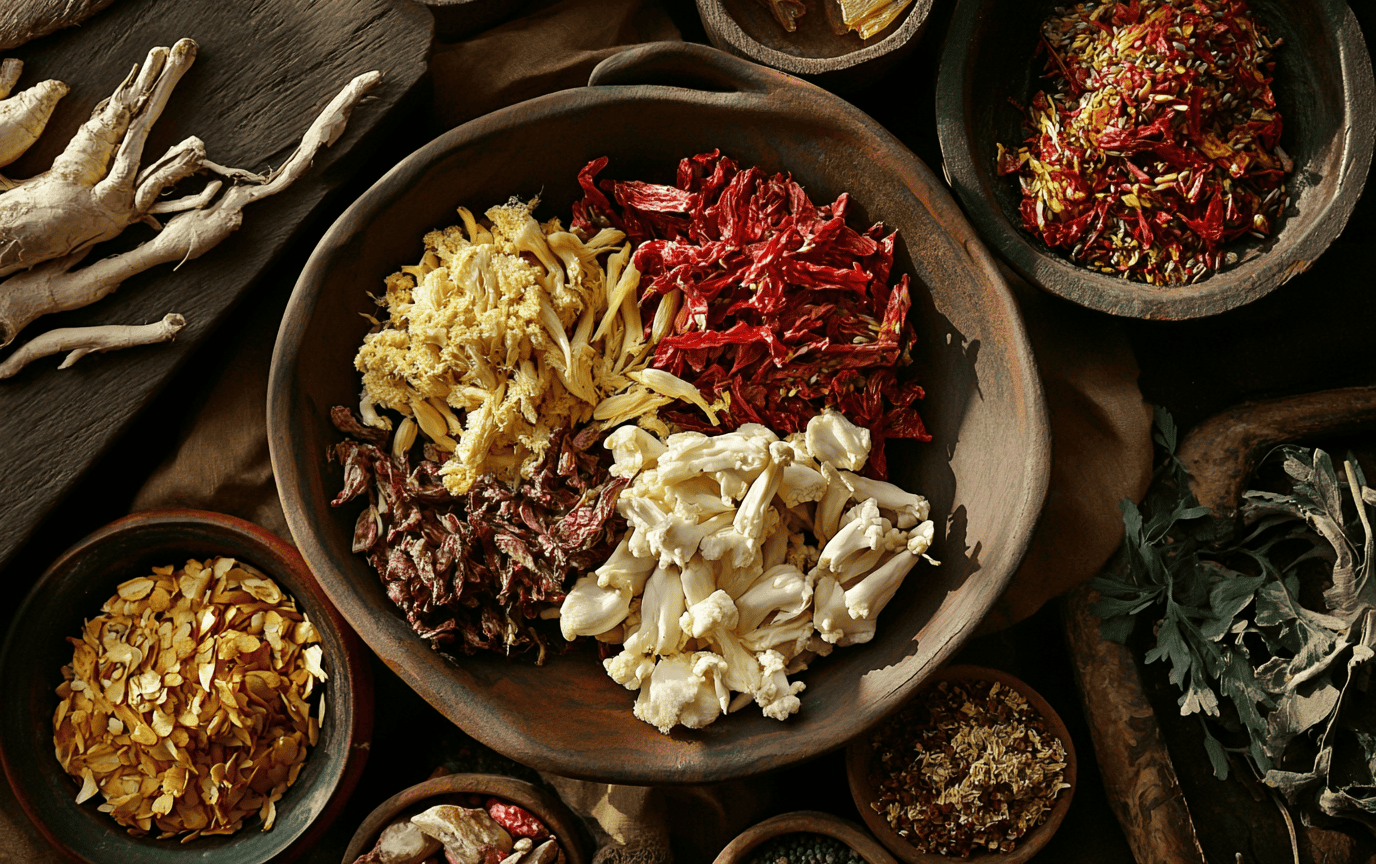Fermented Foods: Global Traditions for Health and Flavor
There’s something beautifully chaotic about a bustling street market in Seoul, where the air is tinged with the spicy scent of kimchi and the sweet tang of fermentation bubbles. The way the vendors call out their wares, laughter intertwining with the sizzle from cooking stalls—it’s a sensory experience that stays etched in your memory. Fermented foods, those ancient nuggets of culinary history, create connections that transcend borders, cultures, and generations. With each bite of kimchi, sauerkraut, or kombucha, we taste not just flavors but also stories, traditions, and health benefits that have stood the test of time.
Global Origins of Fermented Foods
Fermentation is an act as old as humanity itself, a primal ritual that speaks to our need to preserve and transform. Imagine ancient peoples, standing by the rivers that cradle their settlements, discovering that nature has gifted them with something magical. In ancient Asia, from China’s fermented rice beverages to Japan’s nuanced soy miso, every culture became veil-bearers of this powerful process.
Korea, with its fervent love for kimchi—a dish that tells stories of resilience and creativity. As a younger traveler, I remember my first taste of homemade kimchi at a family’s dinner table in Busan. It crackled with electricity, its spicy-sour flavor waking up every taste bud. Either through fermentation or specific spices, sentiments danced through the meal, bridging generations together.
Europe embraced this tradition as well. In Germany, the sharp flavor of sauerkraut—fermented, shredded cabbage—has made its way from rustic kitchens to the modern dining table, heralded for both its tangy delight and its health benefits. Then there are the Eastern European cultures, which cherish yogurt and kefir, often whispering their secrets on the streets of bustling villages where every family has its unique twist—just like my former roommate’s Bulgarian yogurt recipe, crafted over generations.
In Africa, fermentation acted as a lifeline, preserving food during dry seasons. Traditional drinks like boza or fermented made from millet tell narratives of quiet survival. On the American continent, indigenous techniques transformed maize into pozol, a wholesome drink steeped in rich heritage.
Health Benefits of Fermented Foods
Fermentation does more than tantalize the taste buds—it works wonders inside us too. When I first learned about probiotics, the tiny warriors armed with the mission of boosting gut health, I felt as if I’d stumbled upon a secret potion. The complexity of flavors often masks incredible lessons about nutrition.
For many years, I struggled with digestion. A friend introduced me to kombucha, that effervescent tea, rich in beneficial bacteria. One sip felt like rolling the dice on flavor, a gamble that paid off richly. Each bottle bursting with that natural fizz they call life! Fermented foods are not just a culinary delight; they’re a passport to better health. The probiotics enhance gut health and connectivity with the immune system—who knew something so tangy could also be so fulfilling?
Research suggests that these foods bolster nutrient absorption, helping the body reclaim vitamins and minerals. Consuming fermented foods has been linked to a reduced risk of chronic diseases like diabetes and heart disorders. As I balanced my journey of discovery, I marveled at how something so old could arm us with solutions to modern-day issues, all steeped in a rich history.
Fermented Foods Around the World
Let’s embark on a flavorful journey around the globe, exploring the myriad fermented delicacies that represent their homeland:
Kimchi (Korea)
Imagine a bowl filled with crunchy cabbage, marinated in a medley of spices. Each bite of kimchi bursts with flavor, rich in vitamins and brimming with probiotics—designed to tantalize your palate while nurturing your gut.
Sauerkraut (Europe)
The earthy, crisp taste of sauerkraut reminds one of a long-standing tradition that bridges generations. Packed with vitamin C and probiotics, it’s not only a dish but a reminder of the resilience of cultures that persisted through winters with its fermentation magic.
Yogurt (Middle East)
Also known as “leben,” this luscious dairy staple has the perfect balance of tang and creaminess. It dances gracefully in a summer shawarma wrap, adding a refreshing twist to every bite.
Miso (Japan)
This fermented soybean paste, a staple in Japanese cuisine, infuses warmth into every bowl of soup, exhibiting a palette of flavors that can only be described as umami goodness.
Kefir (Eastern Europe)
A drink that fizzes as it glides down your throat. Rich in probiotic diversity, it brings a fresh twist to smoothies and breakfast bowls, easing one’s morning routines.
Incorporating Fermented Foods into Your Diet
Diving into the world of fermented foods may seem daunting, but it can be as spontaneous as a sunlit day at an outdoor festival. Here are a few tips gathered from my own culinary adventure:
- Experiment with Yogurt and Kefir: These versatile bases can transform your smoothies or even serve as the creamy foundation for salad dressings.
- Make Your Own Sauerkraut: This isn’t just for the experts; the humble act of shredding cabbage and mixing it with salt can yield delicious results. Picture the satisfaction of pulling it from the fridge—a homemade treasure waiting to be enjoyed.
- Kimchi Adventures: Let your recipe card expand beyond just a side dish. Incorporate kimchi into stir-fries or as a rustic topping on a savory pancake, and relish the explosion of flavors.
- Savor Miso Soup: On those quiet, rainy days when the world feels heavy, a steaming bowl of miso soup can wrap around you like a warm blanket.
Through these gentle nudges and flavorful cues, you’ll find that incorporating fermented foods becomes more of an adventure than a chore.
The Role of Fermentation in Modern Cuisine
As I roamed through the eclectic neighborhoods of Dubai, I noticed a culinary renaissance unfolding. Restaurants are reviving ancient methods, incorporating kombucha brews and artisanal kimchi into their menus. The shimmering bottles of kombucha line café shelves—a sign of a growing awareness of health and innovation. Fermentation now connects global cultures to modern dietary trends, a magical bridge that further links our histories through taste.
With our world leaning toward health-conscious choices, the ancient art of fermentation has found its place on Instagram feeds, with young chefs paying homage to the traditional ways while sprinkling in their unique twist. The stories behind each dish, the laughter that accompanies every meal, creates a profound bond—a timeless gastronomic journey that invigorates body and spirit alike.
Conclusion
Embarking on the journey of fermented foods is akin to hitting the open road, discovering not only the allure of taste but also the richness of human experience. From the bustling kitchens of Seoul to the cozy retreats in Eastern Europe, we savor these connections each time we enjoy these culinary treasures.
May you continue to explore the vast tapestry of life through food, embracing the myriad flavors, health benefits, and the rich histories that accompany each bite. As you delve into your next meal, remember it’s not just about nurturing your body; it’s about celebrating a shared connection with cultures and traditions around the globe.
Wishing you safe travels and delicious discoveries ahead.
Additional Reading and Resources:
Interested in more insightful reads? Check out our Travel Tips section for the latest advice. For lifestyle inspiration, explore our Lifestyle category, and dive into amazing destinations at Destinations. Don’t forget to connect with us on YouTube, or follow our adventures on Instagram and Pinterest.













